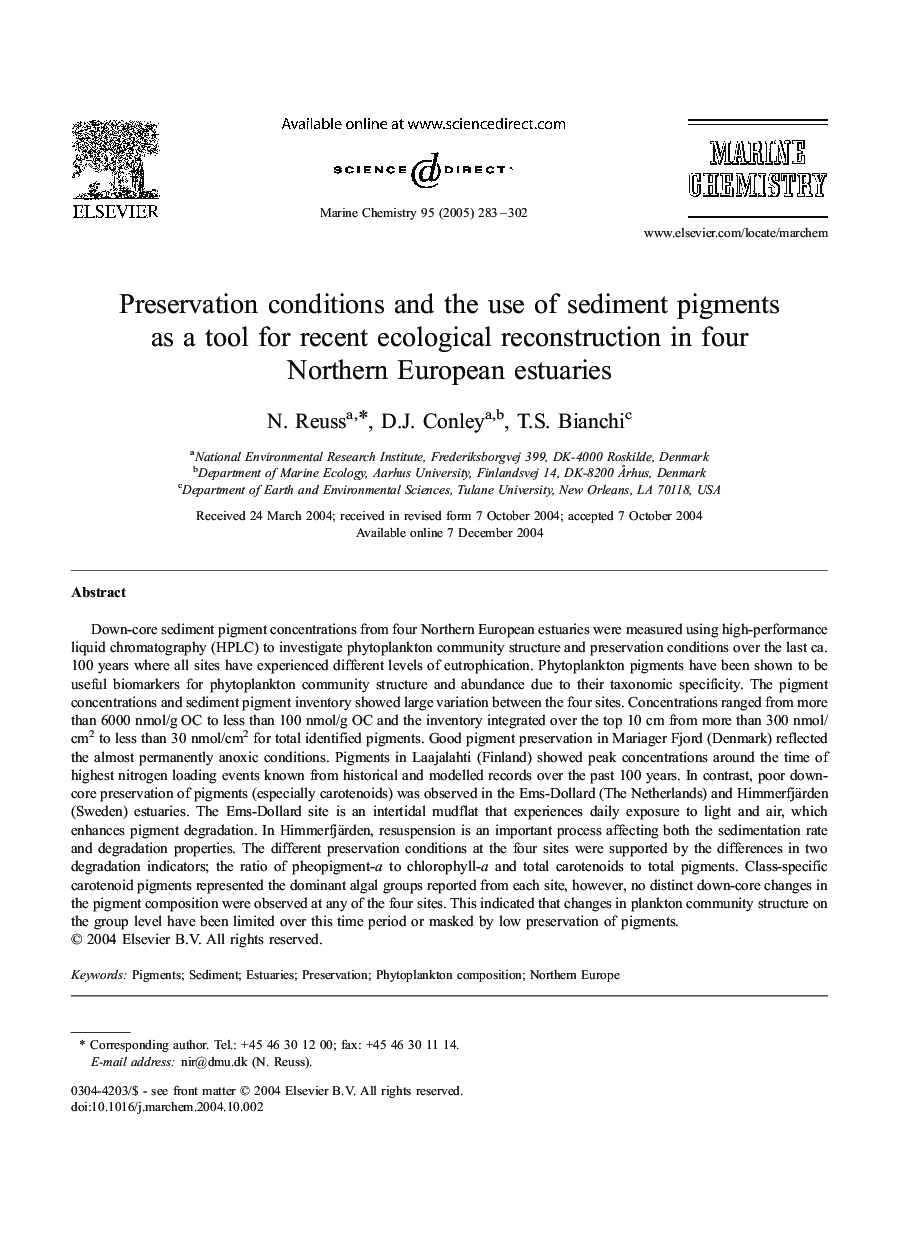| Article ID | Journal | Published Year | Pages | File Type |
|---|---|---|---|---|
| 9758388 | Marine Chemistry | 2005 | 20 Pages |
Abstract
Down-core sediment pigment concentrations from four Northern European estuaries were measured using high-performance liquid chromatography (HPLC) to investigate phytoplankton community structure and preservation conditions over the last ca. 100 years where all sites have experienced different levels of eutrophication. Phytoplankton pigments have been shown to be useful biomarkers for phytoplankton community structure and abundance due to their taxonomic specificity. The pigment concentrations and sediment pigment inventory showed large variation between the four sites. Concentrations ranged from more than 6000 nmol/g OC to less than 100 nmol/g OC and the inventory integrated over the top 10 cm from more than 300 nmol/cm2 to less than 30 nmol/cm2 for total identified pigments. Good pigment preservation in Mariager Fjord (Denmark) reflected the almost permanently anoxic conditions. Pigments in Laajalahti (Finland) showed peak concentrations around the time of highest nitrogen loading events known from historical and modelled records over the past 100 years. In contrast, poor down-core preservation of pigments (especially carotenoids) was observed in the Ems-Dollard (The Netherlands) and Himmerfjärden (Sweden) estuaries. The Ems-Dollard site is an intertidal mudflat that experiences daily exposure to light and air, which enhances pigment degradation. In Himmerfjärden, resuspension is an important process affecting both the sedimentation rate and degradation properties. The different preservation conditions at the four sites were supported by the differences in two degradation indicators; the ratio of pheopigment-a to chlorophyll-a and total carotenoids to total pigments. Class-specific carotenoid pigments represented the dominant algal groups reported from each site, however, no distinct down-core changes in the pigment composition were observed at any of the four sites. This indicated that changes in plankton community structure on the group level have been limited over this time period or masked by low preservation of pigments.
Related Topics
Physical Sciences and Engineering
Chemistry
Chemistry (General)
Authors
N. Reuss, D.J. Conley, T.S. Bianchi,
